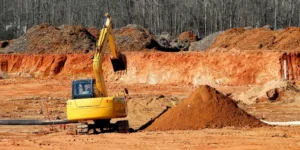Soil engineering is the way forward for architects and engineers due to the benefit of cost effectiveness and viability. Practiced ever since the ancient times, soil reinforcement is constructing stable structures using layers of natural tensile elements. Modern day solutions for ground engineering include incorporating geo-synthetic polymers that can support massive tensile loads and boost the durability of the structure.
What is Soil Reinforcement?
Reinforced soil is a method of enhancing the strength and stability of the soil structures by adding tensile elements to it. It also controls the deformities in the sand structure by generating strains and tensile loads upon the surface. The tensile loads restrict soil movements and impart additional strength to the framework. Building geogrid using reinforced soil is a smart way to increase the power and longevity of the structure.
Benefits of Reinforced Soil
- By including the tensile elements into the ground, you can solidify the structure of the framework
- Using soil reinforcement techniques gives you the freedom to switch over to cheaper raw materials without compromising on the quality of the structure
- Structures made from soil reinforcement techniques do not require much space and can feature a steeper construction
- Soil reinforcement materials also lower the development time.
Applications of Soil Reinforcement
On Embankments
High embankments, airport runways, and earth dams require solid support due to their soft foundations and little shear strength. Incorporating soil reinforcement techniques directly on the weak foundations facilitate construction, promote uniform settlement and provide long-term stability to the structure. The robust high modulus geo-synthetics work on the low shear strength and keeps the subgrades separated.
On Steepened Slopes
Constructing structures on small sites can be a challenge for architects; however, building steepened slopes is a quick and easy solution to the problem. You can apply it anywhere from mining sites and residential developments to landfills. By placing the soil reinforcement tinsel elements on the layers of the structure, we can stabilize the potential weak areas and minimize land acquisition costs.
On Retaining Walls
Retaining walls are found on coastal structures, bridge abutments, and solid waste transfer stations. By including geo-synthesised soil reinforcement solutions, you can lower the costs and enhance the quality of construction. It allows accommodation of large differential settlements without spending a fortune on materials and installation costs.
Soil reinforcement is cheaper, time-saving and much more powerful that the conventional materials used for construction. Tensile strength, interactive behavior, and installation damage resistance are the few factors that you need to take care of while choosing an ideal reinforcement solution.







